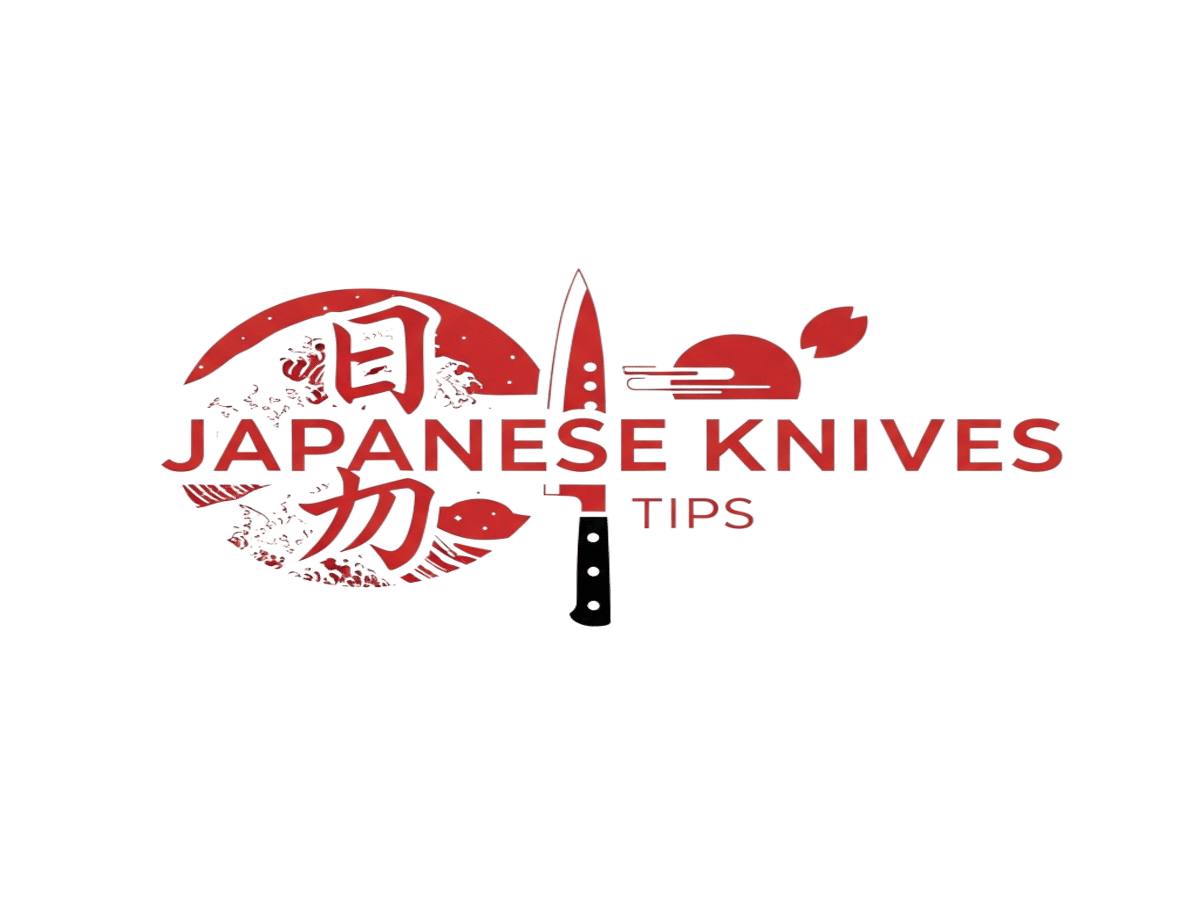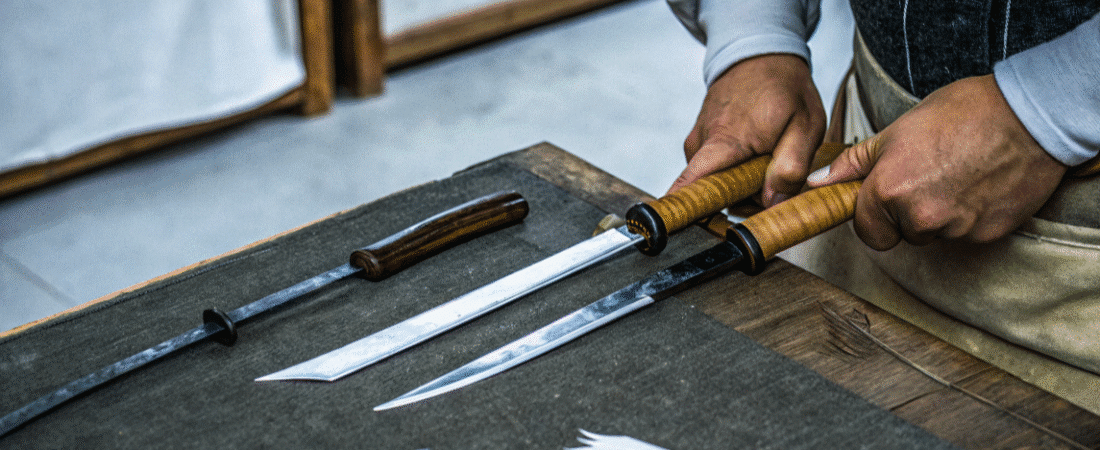The kogatana is a small but mighty Japanese knife known for its sharp edge and versatile use. If you’re into woodworking, carving, or just like handy tools, the kiridashi kogatana is something worth knowing about. Made by skilled Japanese craftsmen, this knife features sharp edges that are especially suited for fine woodworking and carving tasks, ensuring it is built to last and deliver precise cuts every time.
The kogatana is well suited for a variety of precise cuts, thanks to its durable edges.
- What Makes the Kiridashi Kogatana Special?
- Materials and Construction
- Design and Features
- Different Types of Kogatana
- Making Your Own Kogatana
- Sharpening and Maintenance
- How to Use a Kiridashi Kogatana
- Performance and Durability
- Handles and Scabbards
- Why Choose a Kiridashi Kogatana?
- Tips for Getting the Most Out of Your Kogatana
- Final Thoughts
- FAQs
What Makes the Kiridashi Kogatana Special?
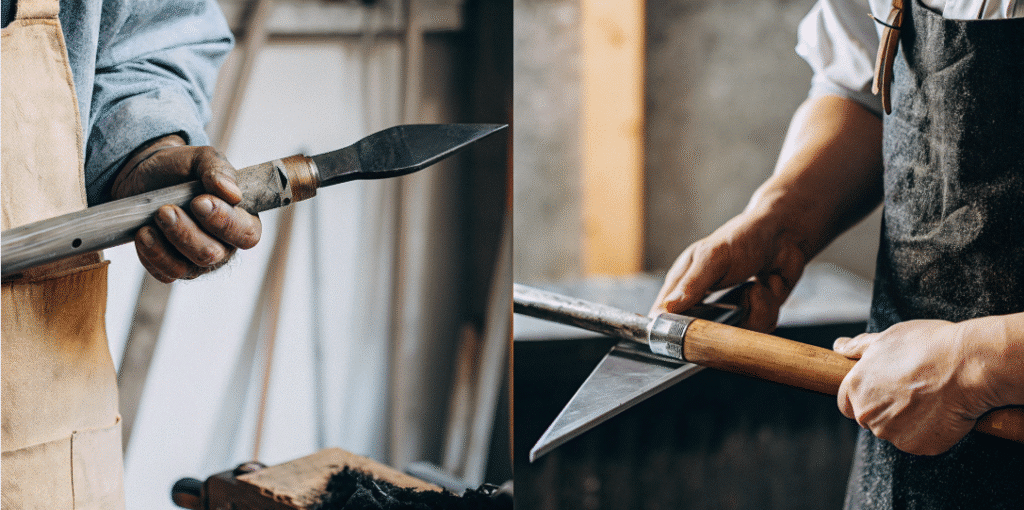
This knife isn’t just any blade. It’s hand forged from Japanese high carbon steel, which means it holds a sharp edge longer than many others. The blade is tough but can be sharpened easily, making it a favorite for detailed carving, marking, and even sharpening pencils. It is often used as a marking knife for precise woodworking and carpentry tasks. Its single bevel and flat back give you excellent control for fine work.
Materials and Construction
The heart of a good kogatana lies in its steel. Most kiridashi knives use high carbon steel like Hitachi Yaguki Shirogami No.1 or Aogami No.1. These steels are known for their hardness and edge retention. Some DIY versions use tool steel like K720 (Aisi-O2), which balances hardness and a bit of flexibility. High-quality chisel steels are often used in traditional Japanese knife making for their exceptional durability. While some flexibility is desirable, the blade should not be overly flexible—rigidity is important for precise control and accuracy.
The blade is usually laminated, meaning a hard steel cutting edge is bonded to a softer iron or mild steel body. This combination gives the blade strength and durability without making it too brittle. The hand forging process helps create a tough crystalline structure in the steel, which improves cutting performance. Proper heat treatment during forging is crucial to achieve the desired hardness and long-lasting durability of the blade.
Japanese-made kogatana are renowned for their superior craftsmanship, use of high-quality materials, and traditional techniques, standing in stark contrast to mass-produced, lower-quality tools from China.
Design and Features
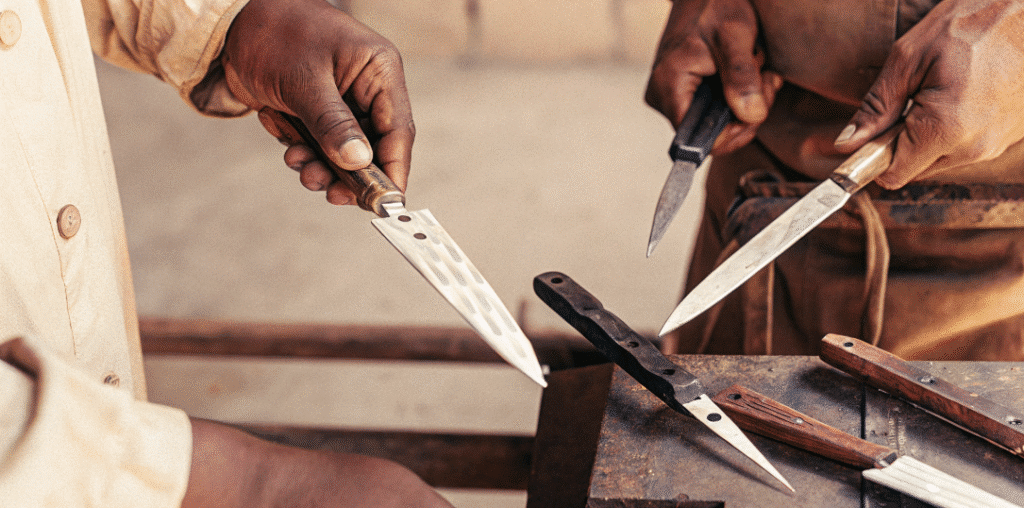
Kiridashi knives have a simple but smart design. The single bevel edge lets you make clean, straight cuts, while the flat back makes it easy to mark wood accurately. Some knives come with a hammered texture on the handle or blade, which helps with grip and adds a bit of style.
The point of the knife can vary depending on what you need. A sharper, slender point is great for detailed work, while a blunter tip handles tougher jobs. The blade width and thickness also change based on use — wider and thicker blades suit heavy-duty cutting, while thinner ones are better for finesse. Kogatana can come in various shapes, both functional and decorative, to suit different tasks and preferences, with some featuring artistic or unique shapes that highlight both design and aesthetics.
Different Types of Kogatana
You’ll find several styles of kiridashi knives. The most popular is the single-bevel type, perfect for carving and marking. Double-bevel knives exist too and offer a more versatile edge that’s easier to use for general tasks.
Some kogatana come with wooden handles, which provide comfort and a secure grip. Others are just the blade itself, favored by professionals who want to get their fingers close to the edge for better control.
Making Your Own Kogatana
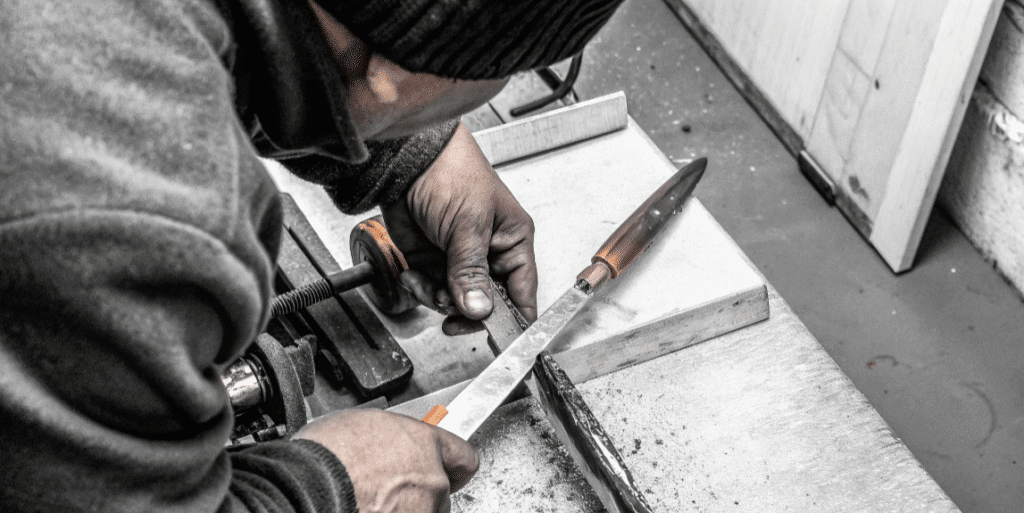
If you like working with metal, you can try making your own kiridashi knife. The process involves cutting the steel to shape, grinding the bevel, and using a file to refine the blade’s shape and remove any burrs before hardening. You’ll need a grinder, a file, a forge or heat source, and stones for sharpening.
Be careful when grinding the blade, especially the bevel — it should leave about half a millimeter thickness before hardening to avoid ruining the edge. When hardening, heat the steel until it’s no longer magnetic, then quench it in oil. Temper it by heating at a lower temperature to reduce brittleness.
Sharpening and Maintenance
Keeping your kogatana sharp is key to its performance. Use a whetstone or belt sander for grinding, but finish off with a leather strop for polishing. When sharpening, maintain a low speed to prevent overheating and damaging the blade. The single bevel makes it easier to maintain a razor-sharp edge that resists roll and stays sharp through repeated use. A properly sharpened kogatana is capable of shaving thin slices of wood for fine finishing work.
Regular cleaning and drying prevent rust. If your knife has a wooden handle, check it for cracks or wear. A simple oil treatment can keep the wood in good shape.
How to Use a Kiridashi Kogatana
This knife is a versatile tool. Use it to mark wood before cutting, carve detailed designs, or sharpen pencils. Its sharp edge makes slicing through materials like leather or thin wood a breeze.
When using, hold it carefully — the single bevel means it cuts best in one direction. If you’re right-handed, a right-hand bevel knife feels natural, but left-hand versions are available too.
Performance and Durability
A well-made kogatana offers excellent sharpness and edge retention. The hard steel edge can slice cleanly and hold up through repeated use. The laminated construction adds toughness, so the blade won’t chip easily.
However, the tip can be fragile if used for heavy prying or dropped. Treat it like a precision tool, not a pry bar.
Handles and Scabbards
Kiridashi knife handles and scabbards? Japanese craftsmen keep it simple. They want function first. A good handle matters. Why? You need a secure grip. This is key for detailed carving. For marking wood too. For any woodworking that needs precision. Many kiridashi knives have wooden handles. Simple ones. They’re shaped to fit your hand. They give excellent control over the cutting edge. The right handle makes the knife easier to use. It helps you guide the sharp edge with confidence. Whether you’re marking wood or making fine cuts.
Want traditional craftsmanship? A wooden handle is popular. It’s made from durable materials. High-quality stuff. Wood feels natural. It offers comfort. It gives a secure grip. Perfect for long carving sessions. Or marking sessions. Some handles are plain. Others are shaped. Some are textured. This enhances grip and style. The handle shape works with the blade. It allows easy manipulation. It gives precise control during use.
Scabbards protect your kiridashi knife. When it’s not in use. They’re just as important. A simple scabbard works best. Handmade ones are great. Often crafted from wood. Or leather. They keep the sharp edge safe. They make it easy to carry your knife. Japanese craftsmen get creative. Sometimes they make combination handle-and-scabbard designs. From a single piece of wood. This offers protection and a secure grip. In one elegant package. This approach safeguards the blade. It ensures your kiridashi knife is always ready for action.
Value tradition? A custom scabbard is perfect. Made from natural materials. Like wood. Or bamboo. It adds Japanese style to your toolkit. Sophistication too. These scabbards are tailored. They fit the specific shape of your kiridashi knife. The specific size too. They provide a snug fit. A secure fit. This prevents damage to the blade. It maintains the sharp edge. Want a modern look? A minimalist look? Or a classic style? A handcrafted style? The right scabbard enhances functionality. It enhances quality too.
Handles and scabbards do more. They contribute to the overall look. The aesthetic of your kiridashi knife. A beautifully crafted handle elevates the tool. A beautiful scabbard does too. It makes it a pleasure to use. A pleasure to display. For many Japanese craftsmen? The attention to detail matters. In these components. It reflects dedication to quality. The same dedication that goes into forging the blade.
What’s the bottom line? The choice comes down to you. Your personal preferences. Your needs. Want a simple design? A functional one? Or a traditional approach? A handmade one? Either way, invest in quality. A high-quality handle and scabbard enhance your experience. With kiridashi knives. With proper care? These components help your knife deliver. Reliable performance. Lasting durability. Making it a trusted companion. For all your woodworking projects. For all your carving projects.
Why Choose a Kiridashi Kogatana?
If you want a small, sharp, and reliable knife for woodworking or crafting, this is a solid choice. It’s widely used in Japan for marking and carving, and its design suits detailed work perfectly.
The knife is easy to carry and handle. Its simple shape fits comfortably in your hand or pocket. Whether you’re whittling, marking, or slicing, the kogatana is up to the task.
Tips for Getting the Most Out of Your Kogatana
- Use a sharpening stone regularly to keep the edge sharp.
- Avoid cutting hard metals or prying to protect the tip.
- Choose the right blade width and thickness for your work.
- Consider a wooden handle if you want extra comfort.
- Store the knife in a sheath or scabbard to protect the blade.
Final Thoughts
The kogatana is a humble but powerful tool that’s earned its place in the toolkit of many craftsmen. Its sharp edge, sturdy build, and simple design make it a favorite for detailed carving and marking tasks. Whether you buy one ready-made or make your own, this knife will serve you well if treated with care.
Give it a try and see how it changes the way you work on wood and other materials. It’s a small blade with a big impact.
FAQs
What makes a kogatana different from other knives?
A kogatana is small but tough. It’s got a sharp edge made from hard Japanese steel that holds up well. The single bevel and flat back help you make clean, straight cuts. It’s great for detailed work like carving or marking wood. Plus, it’s simple and built to last.
Can I use a kogatana for things other than woodworking?
Yeah, you can. It’s handy for cutting leather, sharpening pencils, or small craft projects. Just keep in mind it’s not made for heavy-duty stuff like prying or cutting metal. Treat it like a precise tool, and it’ll serve you well.
How do I keep my kogatana sharp and in good shape?
Keep it dry and clean after use to stop rust. Sharpen it with a whetstone or leather strop, focusing on the single bevel side. Don’t rush—take your time and keep the blade cool while sharpening. If you have a wooden handle, a little oil now and then will keep it from drying out.
